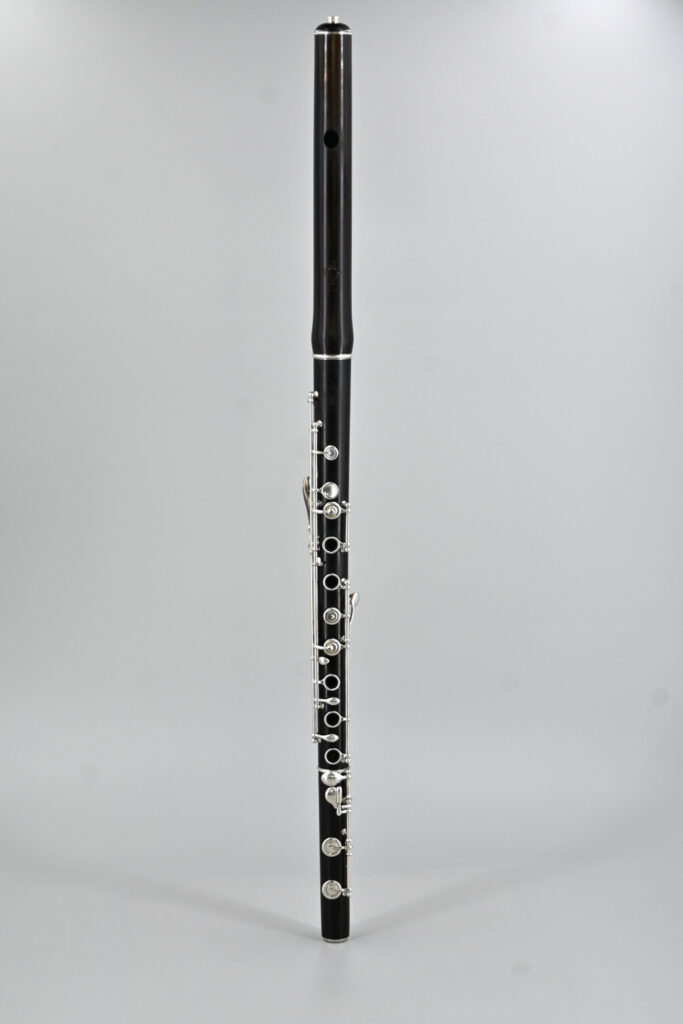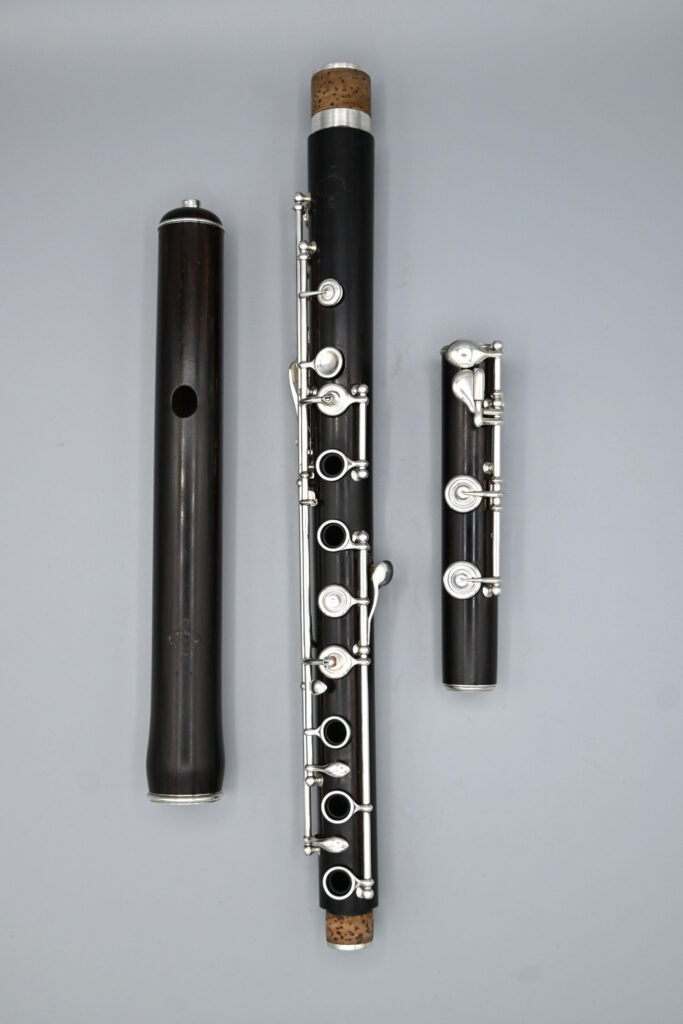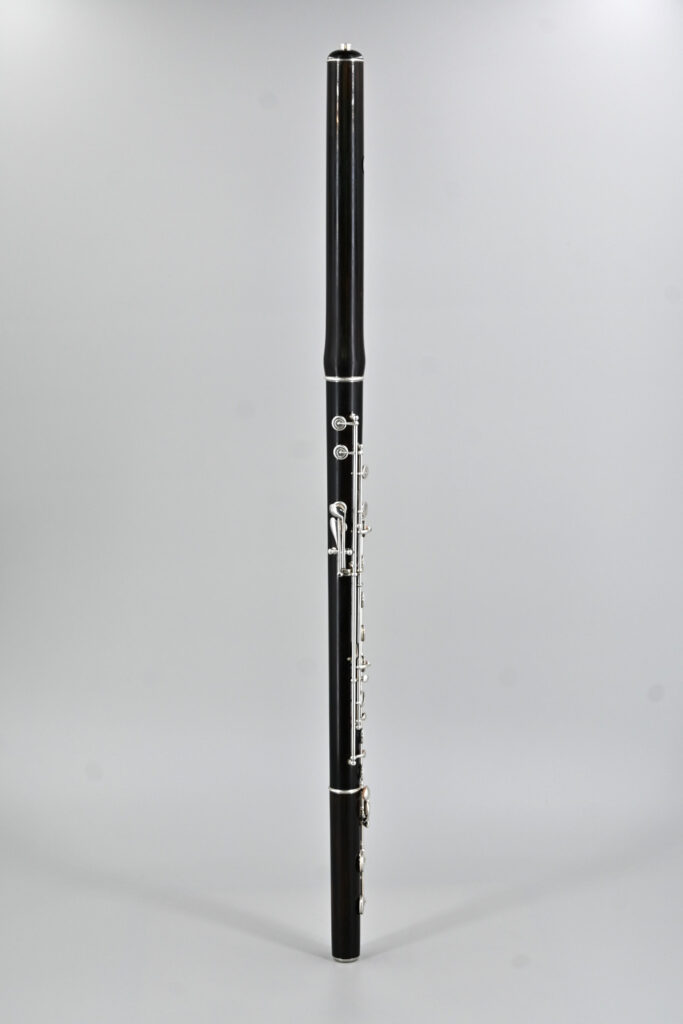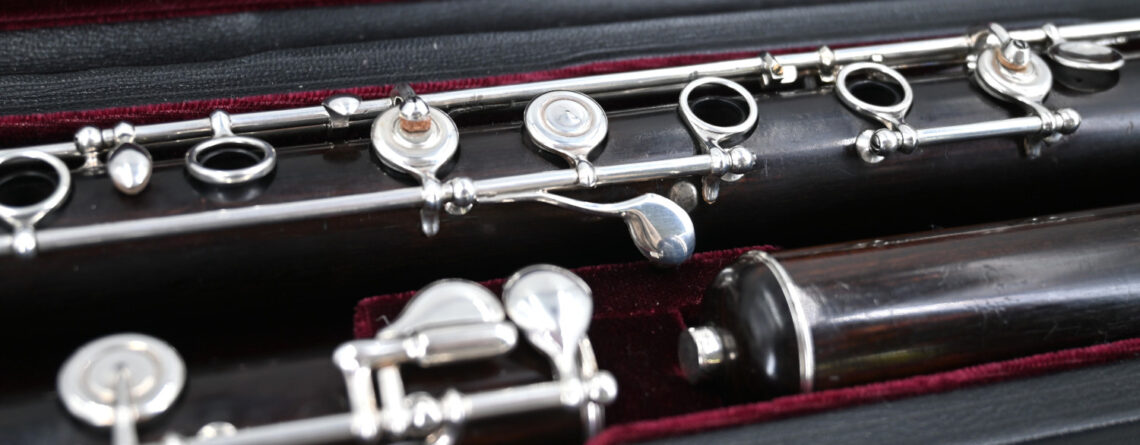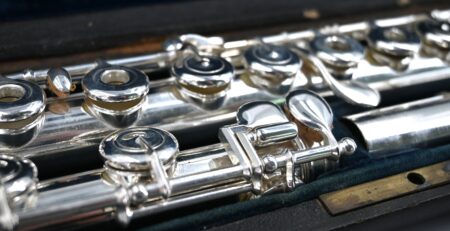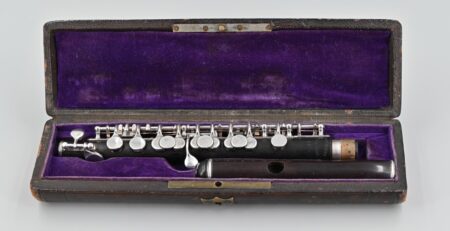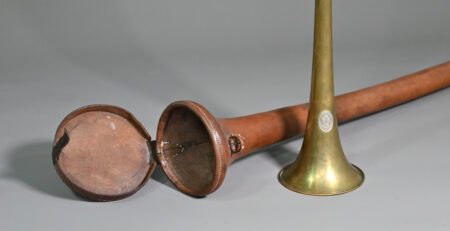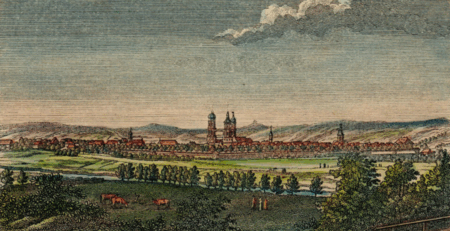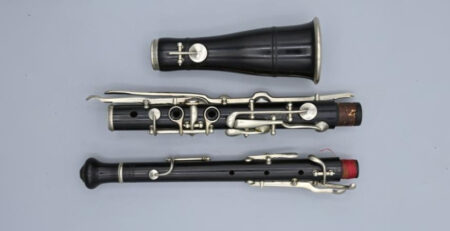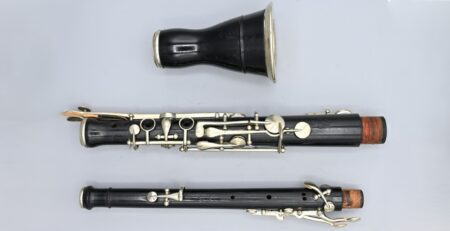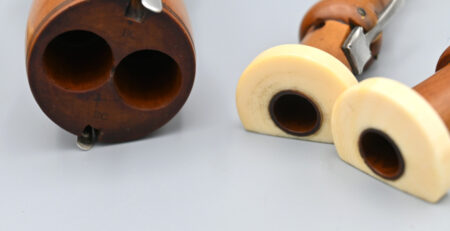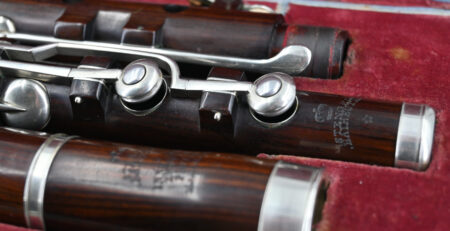Ring-key flute – GODFROY AINÉ, Clair
Ring-key flutes are very special, aren’t they? This Clair GODFROY Ainé (1774-1841) ring-key flute is just fabulous.
There were five generations of the Godfroy family. Clair Godfroy Ainé or Clair Godfroy II was trained by his father – Clair GODFROY I (1750-1813) of course. Although he made all woodwinds, he is known for his expertise in flutes. Born in La Couture-Boussey, he moved to Paris around 1800 and was a music instrument maker and seller, but didn’t set up his own workshop there until 1814. On a personal level, he was married twice and his first daughter from his second marriage, called Caroline Joséphine, would go on to marry one of his workers – a certain Louis LOT (1807-1896). He retired from the business in 1836 and the company was then run as a partnership by his son Vincent Hypolite GODFROY (1806-1868) and his son-in-law Louis LOT. The two went their separate ways in 1854. Vincent Hypolite continued on his own and when he died, his widow carried on the company until her death in 1888.
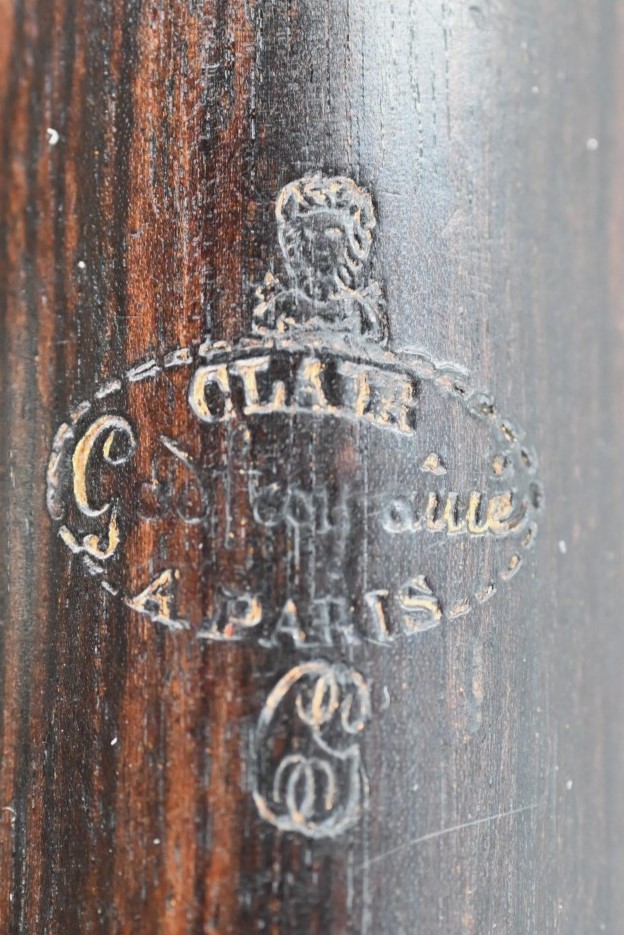
The stamp on this flute is one that was used from 14 May 1829 by Clair Godfroy Ainé. There were many counterfeit Godfroy flutes on the market, so he decided to change his stamp and make it more difficult to copy. All the parts bear this particular stamp.
The flute features of course the 1832 Boehm ring-key system with Dorus G-sharp key and the left thumb key is a fully equipped B-flat key. It has a C-foot with beautifully made pointed arm keys – very typical for French instruments of that time. It possesses its original screw cork.
The entire mechanism was made with extreme precision combined with Godfroy’s hallmark French finesse. Its original and unaltered embouchure displays this maker’s great mastery.
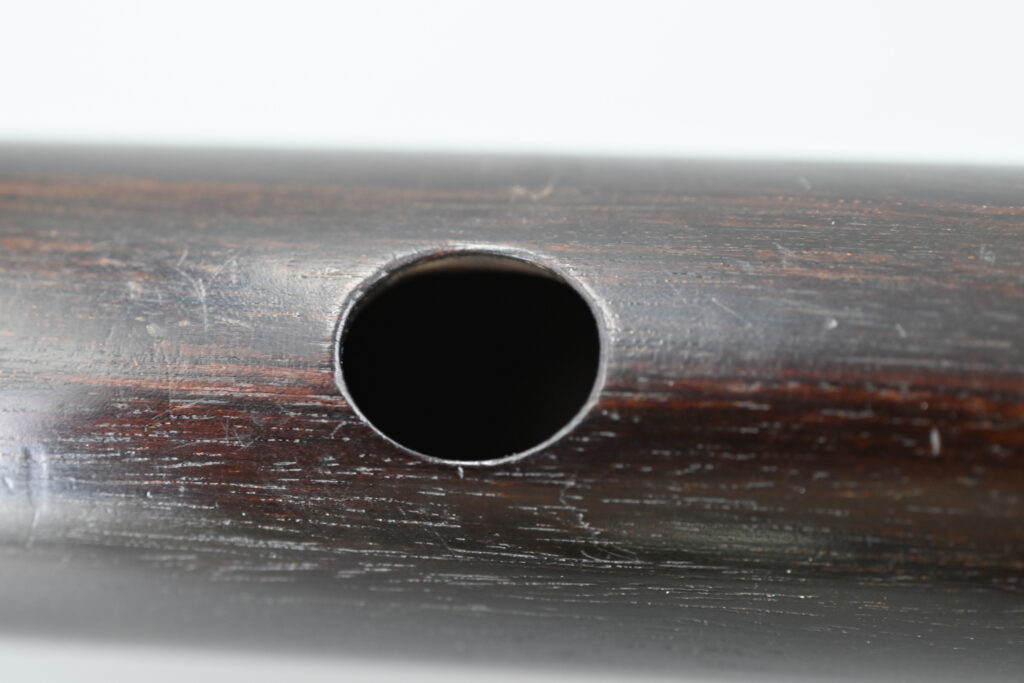
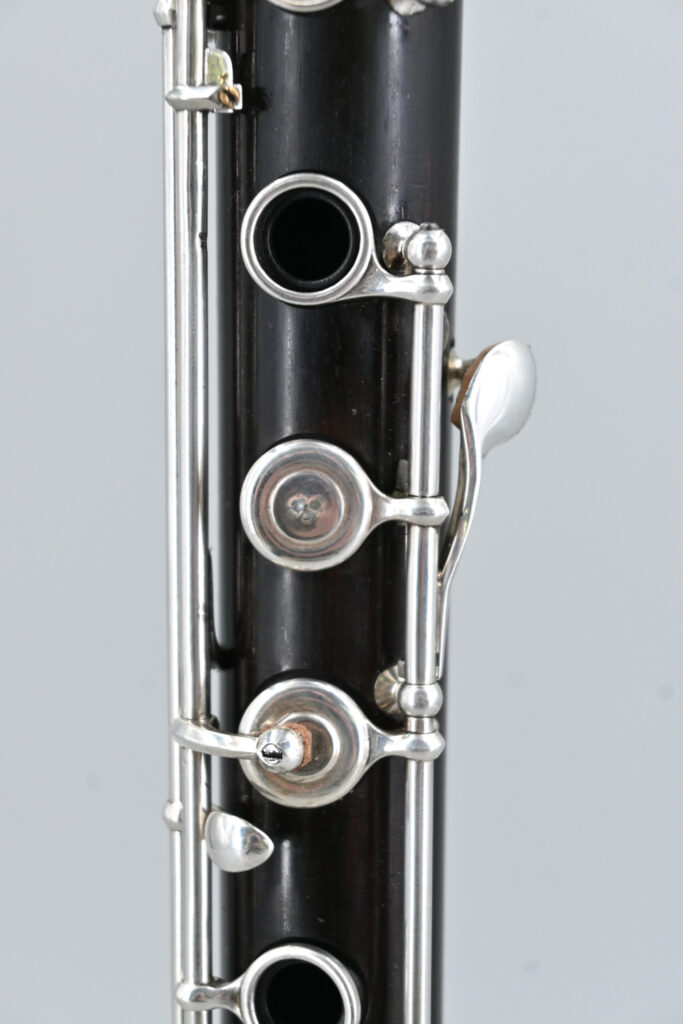
This ring-key flute has been given some very special attention and restored in every detail. It has new pads that were custom made to fit perfectly. It has new wooden tenon protectors.
The sound of this flute is simply everything Godfroy – fine, elegant and bright! The pitch is around a=442 Hz.
